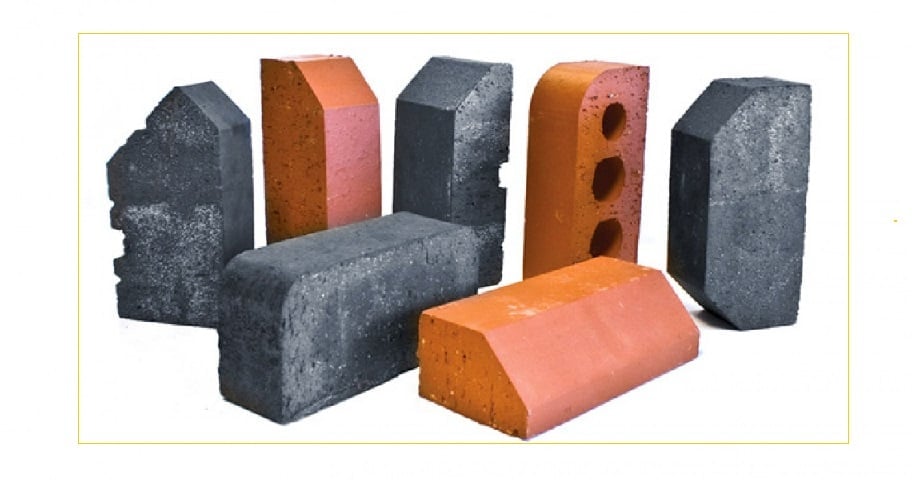Classification of Engineering Bricks
The shape, size and other properties of brick directly depend upon the raw material used and the method of manufacturing. All the bricks obtained are of a different nature. Lion order to bring a certain degree of uniformity in its quality and properties the Bureau of Indian standards have classified burnt bricks into the following four categories.
These are first class bricks, second class bricks, third class bricks and the fourth one is over burnt or Jhama bricks.
We will understand this one by one but for more details IS 1077-1971 may be referred.

Types of Bricks for Buildings
First Class of Brick
As we know that the name suggests these are of 1st quality. These bricks are well burnt having a smooth and even surface.
The shape of the brick is perfectly rectangular and the colour is uniformly reddish. The following properties should be there in a first class of bricks in civil engineering:
Size of Bricks 190 mm x 90 mm x 90 mm
1.it should not give any mark when stretched with a fingernail but should metallic ringing sound when struck with each other.
2. Water absorption by weight should not exceed 20% and compressive strength should be more than 140 kg/cm2
3. When broken into two pieces it should show a uniform and dense texture.
4. The efflorescence should be nil or sight.
5. These bricks are suitable for all types of structures.
6. These are excellent for the exterior work, where plastering is not done.
7. These are also suitable for flooring.
You should know about Testing of Bricks
Second class bricks
These types of bricks are slightly over burnt and not perfectly rectangular in shape. and These are hard enough having rough surface. The colour of bricks is uniform like solid and should give metallic ringing sound when struck with each other.
Water absorption should not more than 22% by weight and compressive strength should be more than 70 kg /cm2 these can show slight efflorescence.
Uses of Second Class Bricks: It is suitable for interior walls and for exterior walls with plastering these are not much suitable for flooring.
Third class bricks
Generally these bricks are not properly burnt. The bricks may be under burnt or over burnt. The shape and size of these bricks is non-uniform and colour is light red with yellow spots.
Give dull sound when struck with each other. The compressive strength is below 70 kg/cm2 and water absorption is above 23% high or low efflorescence may be there.
Uses of Third Class Bricks: These are used for an inferior or ordinary type of work where the rainfall is very low.
Jhama or over burnt bricks
Jhama Bricks are mostly not used these are over burnt bricks with irregular in shape and size. They may get twisted due to over burning.
The colour of these bricks are dark red blue The water absorption is very low and the compressive strength is high as of the order of 150 kg/cm2.
Uses of Third Class Bricks: These bricks are not useful for building construction. But in the broken from very useful in road construction, the foundation works.
Classification of engineering bricks are most important for all engineers because bricks are the special unit of civil engineering.
Must Read Other Powerful Articles
- Different types of scaffolding
- Basic Knowledge about Bridge Engineering
- Properties of Cement
- Different varieties of cement
- Common Tests on Building Stones
- Types of Tiles
- Moulding of Bricks


Leave a comment